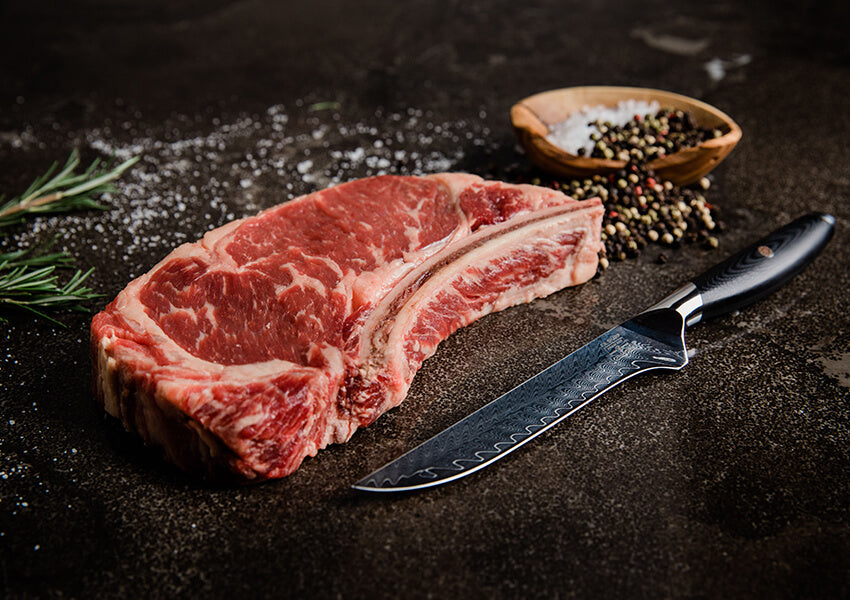When it comes to precision in the kitchen, the carbon steel boning knife stands out as an essential tool for chefs and home cooks alike. Known for its ability to make delicate cuts, it’s a favorite among culinary professionals. In this article, we’ll delve into the reasons why this knife is a must-have in your kitchen arsenal.

The Art of Boning: Why a Boning Knife is Essential
The primary function of a boning knife is to remove bones from meat, poultry, and fish. The carbon steel boning knife excels in this task due to its sharp edge and flexibility. It’s particularly useful for tasks that require precision, such as filleting fish or de-boning chicken.
Key Features of a Carbon Steel Boning Knife
Carbon steel is renowned for its durability and ability to maintain a sharp edge. This makes the knife perfect for intricate cuts. Unlike stainless steel, carbon steel knives require more maintenance but reward you with superior cutting performance.
Advantages of Carbon Steel in Knives
Carbon steel knives are preferred by many chefs for their exceptional sharpness. They also provide a unique feel and feedback that many knife enthusiasts appreciate. The edge retention of a carbon steel boning knife is often superior to that of stainless steel, making it ideal for repeated use.
Maintenance Tips for Your Carbon Steel Boning Knife
While they are high-performing, carbon steel knives require regular maintenance to prevent rust and corrosion. It’s essential to keep the knife dry and store it properly. Regular sharpening will ensure it remains effective for all your culinary needs.
Using Your Carbon Steel Boning Knife Effectively
Proper technique is crucial when using a boning knife. Ensure you have a firm grip and use smooth, controlled motions to avoid injury. Familiarize yourself with different cutting techniques to maximize the effectiveness of your knife.
Comparing Carbon Steel and Stainless Steel
While both materials have their merits, carbon steel is often favored for its sharpness and edge retention. However, it requires more care than stainless steel. Choose a carbon steel boning knife if you prioritize performance and are willing to invest time in maintenance.
Safety Tips for Using Boning Knives
Safety is paramount when using any knife. Ensure your knife is sharp, as dull blades are more dangerous. Always cut away from your body and use a stable cutting surface. For more tips, check out our knife safety guide.
Choosing the Right Boning Knife for Your Needs
Consider the size and flexibility of the knife. A flexible blade is ideal for fish, while a sturdier blade works better for meat. Evaluate what youll be using it for most often to make the best choice.
Carbon Steel Boning Knife in Professional Kitchens
Many professional chefs swear by their carbon steel knives for their precision and reliability. These knives are a staple in Michelin star kitchens, attesting to their quality and effectiveness.
FAQs About Carbon Steel Boning Knives
- Why choose a carbon steel boning knife? They offer superior sharpness and edge retention.
- How do I maintain my carbon steel knife? Keep it dry, sharpen regularly, and store properly.
- What are the differences between carbon and stainless steel? Carbon steel is sharper but requires more maintenance than stainless steel.

Conclusion: Investing in a Carbon Steel Boning Knife
Investing in a carbon steel boning knife is a decision that brings numerous benefits to your cooking experience. With proper care, this knife will serve you well for years, enhancing your culinary skills with each use. Learn more about the versatility of boning knives by visiting this guide.
This article contains affiliate links. We may earn a commission at no extra cost to you.


